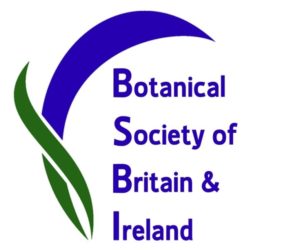Kirkcudbrightshire Botany Group, Ravenshall Point, 8th April 2022
Warned you all that it was difficult to get in and out of the site!
Despite that, 5 of us descended the cliffs by another, “easier” route down the cliffs at the west end of the search area. On the way down I spotted Agrimony Agrimonia eupatoria and violets in flower. The tide was at its lowest then and remained low enough throughout our 4-hour visit to enable us the get to the eastern end by a waterfall, thus searching the whole of this known site of Holy Grass (now called Anthoxanthum nitens and no longer Hierochloe odorata). The grass is so named as it seems to be associated with some religious sites, but also because it flowers around Easter time and was once strewn on pilgrimage ways – it has a strong almond scent when crushed.
To put this rarity into perspective – there are 29 hectads (10×10 km squares) from which this species is known in Britain & Ireland, all but 1 in Scotland and Ireland. Of these 29 areas, 4 are in Kirkcudbrightshire and all occur along the coast here. It’s closely related to the quaking grasses to which its flower spike and seeding heads bear some resemblance. But it is also notable for its leaves which are bright green shiny on one side and paler grey-green, not shiny, on the other – a character best seen in bright sunshine.
As is the case for Townhall Clock Adoxa moschatellina, it’s a plant that you can easily miss if not flowering, so it’s best to survey this species in March and April.
SNH surveyed this site in July 2010, a time of the year when it’s not at its most obvious, and found around 50 seed heads spread over a stretch of about 25 metres. I surveyed the site in April 2012 and found about 300 flowering shots then in roughly the same areas as the SNH surveyors found it, but extending over about 40 metres. This time around there must have been in excess of 500 flowering heads. These figures don’t take account of the many non-flowering shoots we saw, those shiny green leaves, so this must be a fairly healthy population.
We also found one site on each side the waterfall at Corbies Bay where SNH had found a small site only on the east side of that waterfall. So perhaps it is slowly spreading and increasing in numbers. I will be submitting a report to SNH for their files.
The SNH 2010 survey also found a colony of the rare Dotted Sedge Carex punctata on the west side of the waterfall; there was definitely a clump in the same location which appeared to be that sedge. Really too early in the season to be absolutely sure, but the indications were of that species. A visit later in the summer?
Throughout all this, we recorded other species along the shoreline and in the surrounding deciduous woodland on the climb back to the cars – and the adjoining layby. In all we had 93 species, including Great Horsetail Equisetum telmateia and Narrow-leaved Everlasting Pea Lathyrus sylvestris which looked to have spread significantly since last seen in 2012. There were several ancient woodland indicator species, and a shoreline with mixed Bog Myrtle Myrica gale, Black Bog-rush Schoenus nigricans, Hemp Agrimony Eupatorium cannabinum and Burnet Saxifrage Pimpinella saxifraga indicative of a mineral-enriched damp/wet area. And finally a puzzle in the woodland, a bluish-flowered violet with a slightly coloured but notched spur, finally identified as Common Dig Violet Viola riviniana.
Thanks to the intrepid attendees for the help and company. Details of the next field meeting, 23rd April, will be sent out in the next few days – again for Holy Grass and also for another rarity Saltmarsh Flat Sedge Blysmus rufus.
David Hawker
BSBI county recorder for Kirkcudbrightshire VC73

